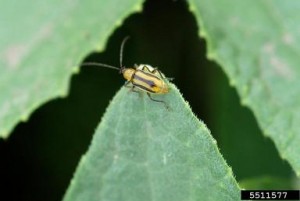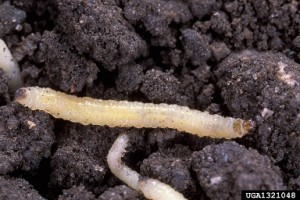Launching Our “Lessons Learned” Series:
With winter coming on and much of the fieldwork done, what better time to go into “lessons learned” mode? Each growing season is different, with nature dishing up some new entrée — something new on your plate. Sometimes it’s good. Sometimes it’s not. If it’s not, even if it happened to someone many miles away, why not learn from another grower’s ill fortune to better plan your IPM strategies for next year?
In this case — published in our 2013 – 2014 Year in Review — corn growers are the ones most in need of paying heed. And it took but one case for people sit up and take notice.

The symptoms were telling: large swaths of corn suddenly flat to the ground with goose-necked stalks, badly pruned roots — and nothing else to blame it on. The larvae that most likely pruned the roots had, by then, grown and flown. But long experience pointed a finger at corn rootworm — CRW for short.
A natural insecticide, Bt, has long been incorporated in some genetically modified corn to battle CRW. It works great if managed correctly. But pests (and CRW is a great example) have a long history of becoming resistant to most any pesticide. Growers can and should use IPM tactics that greatly lessen the likelihood of resistance.
Crop failures associated with Bt corn surfaced as far back as 2007 in America’s corn belt. Still, it was a surprise to find the first probable instance of Bt resistance in corn in the Northeast this past year — in a cornfield in upstate New York.
For those grown accustomed to the convenience of high-yielding, almost pest-free corn — well, you can see why some farmers might let down their guard.

Photo credit W. Upham, Kansas State University
For these growers, three IPM watchwords:
- Give it a break: continuous corn means continuous pests
- Rotate! plant soybeans, alfalfa or wheat — corn rootworm doesn’t eat them
- Plant a refuge: a belt of non-Bt corn along the edge of your main crop helps sideline CRW
Corn contributes more than $685 million to New York’s economy. Which is why IPM strategies for halting the spread of corn rootworms newly resistant to Bt corn are critical. Because — this could happen to you.

Thanks to Elson Shields and Keith Waldron for reporting this story.